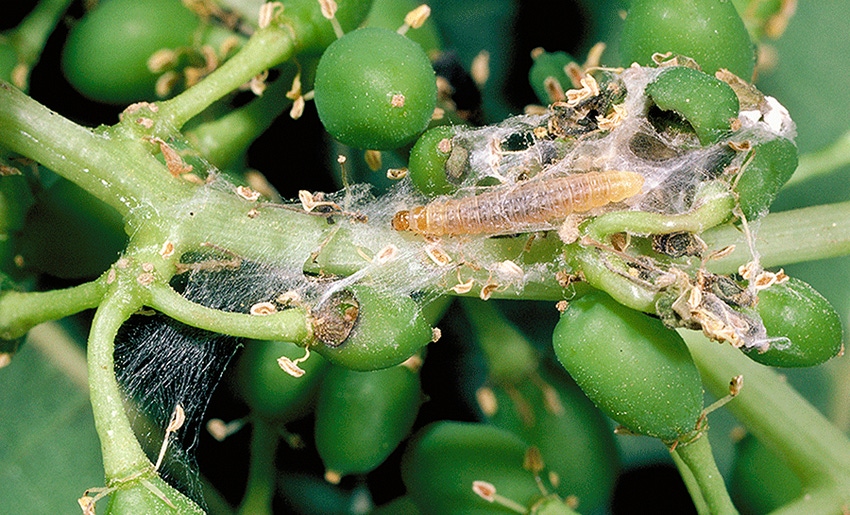
Cleaning out vineyards during the winter can help alleviate a problem that often comes to a boil during harvest season, say University of California scientists.
The omnivorous leafroller overwinters in the larval stage in grape mummies, vineyard weeds, and other vineyard trash, then multiplies in the summer until it takes its toll just after veraison, according to the UC Statewide Integrated Pest Management Program.
The pest’s most significant damage occurs when feeding allows rot organisms to enter fruit at the damage sites, making it one of the most serious pests in California’s Central Valley and coastal vineyards, UC scientists say.
Because the leafroller’s summer population increase is believed to result from migration triggered by the drying out of weeds, cultural control is an important component in managing the pest, the UC IPM program advises in management guidelines on its website.
TREAT ONLY AS NEEDED
Omnivorous leafrollers are often confused with grape leaffolders. But unlike leaffolders, the leafroller doesn’t actually roll leaves; rather, it ties leaves together and feeds inside. Later, nests can be found in flower clusters, bunches, leaves, or shoot tips.
In spring, larvae finish developing and moths emerge and lay shinglelike egg masses on grape leaves. Eggs hatch after about five days, and larvae web two young leaves together to form their nest.
Omnivorous leafroller larvae usually drop to the ground on a thread when disturbed rather than dropping directly, as the grape leaffolder does. Because populations are usually small in spring and early summer, the UC recommends spring treatments if the vineyard has a history of problems with the pest. Otherwise, chemical treatments are only applied if monitoring shows a need.
In the Central Valley and other warm inland valleys, growers can use pheromone traps, degree-day models, and monitoring to keep an eye on omnivorous leafroller populations. UC advisors say acceptable damage levels at harvest are about 1 percent to 2 percent for raisin grapes and less for wine and table grapes. Trying to reduce damage below those levels may not be cost effective.
CULTURAL CONTROL
During the dormant season, growers should control vineyard weeds, prune out old fruit mummies, and destroy them by flailing or shredding, the UC advises. Farms should French plow and disk clusters and weeds to bury overwintering larvae living in ground duff and dried berries.
Removing basal leaves will also improve coverage of pesticide treatments, but growers should be cautious not to remove so many leaves that it causes sunburned fruit. Early harvests can prevent infestation by fourth-generation larvae.
For more details, see the UC IPM management guidelines for the omnivorous leafroller at https://bit.ly/2wVCn2X
About the Author(s)
You May Also Like






